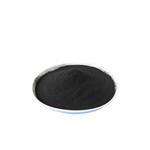What is common uses of iridium?
Mar 13,2024
Introduction
Iridium metal is one of the most chemically inert materials in existence. Therefore, natural iridium metal, with its natural abundance of 37% 191Ir, is the target material for producing 192Ir by a nuclear reactor's n,γ reaction[1].

Chemical properties
A precious, silver-white metal, iridium is hard and brittle, but it becomes ductile and can be worked at a white heat, from 1,200° to 1,500° C (2,200° to 2,700° F). It is one of the densest terrestrial substances. In a massive state, the metal is practically insoluble in acids and is not attacked by aqua regia. It can be dissolved in concentrated hydrochloric acid in the presence of sodium perchlorate at 125° to 150° C (257° to 302° F).
Common uses
The geometric shape selected for the iridium target pieces depends on its eventual use. The predominant use is for γ-radiographic, nondestructive examinations of welded joints in heavy steel structures such as bridges, ships, and pipelines. The iridium metal is cut into thin disks, nominally about 2.7 mm in diameter and about 0.3 mm thick. The disks are encapsulated in aluminum tubes during irradiation. Immediately after irradiation, the targets are moved into a shielded hot cell, where the target is cut open, and the irradiated disks (192Ir γ product) are cleaned, weighed, and shipped to commercial fabricators of portable, shielded γ cameras[2].
Iridium is often used as the minor component in alloy mixtures, often with less than 20% iridium. Above 20% iridium, the alloy loses ductility and becomes difficult to process. Common alloys are Ir–Os and osmiridium. Iridium, containing a small percentage of ruthenium, melts several hundred degrees higher than iridium. Iridium is used to increase palladium and platinum hardness and corrosion resistance. The intermetallic compounds Ti3r, ThIr2, Nb2Ir, and Th7Ir3 have been shown to possess superconducting properties. Iridium–tungsten alloys have increased tensile strengths, especially at high temperatures.
Iridium is used in handpieces and other instruments for use in magnetic resonance imaging (MRI) and spectroscopy. A source of neutron radiation, iridium-192 or iridium-192m, is usually used as the radiation emitter in these devices. An iridium alloy shield may be deposited between the patient and the radiation source to protect patients from the harmful effects of their exposure. It provides shielding to reduce the dosage required per irradiation time and avoid damaging tissue when exposure is excessive[3].
Iridium is often used in nuclear energy applications. For example, reactor fuel is alloyed with iridium to withstand higher temperatures by absorbing quantized vibrational energy from gamma rays emitted by fission products. Iridium is also used as a coating for other metals that need to be resistant to neutron damage. Its isotope, iridium-192, is used in some radioisotope thermoelectric generators.
Iridium is widely used in the aviation industry. Ballast keels in the cavities of propellers and rudders are usually made of iridium. An iridium alloy delays the deformation of turbine blades and vanes in a high-temperature environment. For example, hot air from a gas-fired power plant turbine passes through a duct built with an iridium alloy. This heat-resistant property makes it possible for blades to be thinner than usual and reduces their weight. As a result, it is possible to increase engine efficiency. Iridium alloys are also used to fabricate rocket nozzles and many other aerospace materials to prevent corrosion caused by oxidation at high temperatures.
References
[1] Collins, E. and C. L. Ottinger. “Isotopes, Separation and Application.”Encyclopedia of Physical Science and Technology (Third Edition)(2003):109-126.
[2] Schmidbaur, H. “Noble Metals (Chemistry).”Encyclopedia of Physical Science and Technology (Third Edition) (2003).: 463-492.
[3] https://www.echemi.com/cms/1069303.html.
- Related articles
- Related Qustion
- Where does Iridium Come From? Extra-terrestrial or Volcanic? May 30, 2024
Iridium is one of the nine least abundant stable elements in the Earth's crust, as for its source, some say it comes from extraterrestrial, others say it comes from volcanic eruptions on Earth.
- Iridium nanomaterials: synthesis and applications Nov 23, 2023
Iridium nanomaterials pose synthesis challenges due to oxide formation, yet exhibit remarkable properties for catalysis and electrochemistry.
- Iridium's impact Oct 14, 2019
The story of iridium is both modern and prehistoric. It was discovered along with osmium in 1803 by the British chemist Smithson Tennant, born in 1761 in Selby, Yorkshire. Tennant studied medicine but after graduating found it unsuitable fo
Supplementation with pyridoxal 5'-phosphate monohydrate can synthesize neurotransmitters such as dopamine and serotonin, maintaining a healthy nervous system.....
Nov 4,2025Biochemical EngineeringIn hydrated CuSO4, the water molecules surrounding the Central Metal (Cu) act as ligands, resulting in a d-d transition and, therefore, emitting a blue color in the visible region, due to which hydrated CuSO4 appears blue.....
Mar 13,2024Inorganic saltsIridium
7439-88-5You may like
- Iridium
-

- 2025-12-06
- CAS:7439-88-5
- Min. Order:
- Purity: 0.99
- Supply Ability:
- Iridium
-

- $1.00 / 1KG
- 2025-12-03
- CAS:7439-88-5
- Min. Order: 1KG
- Purity: 99%
- Supply Ability: 300kg
- Iridium Powder
-

- $10.00 / 1g
- 2024-11-07
- CAS:7439-88-5
- Min. Order: 1g
- Purity: 99.95%
- Supply Ability: 200000






